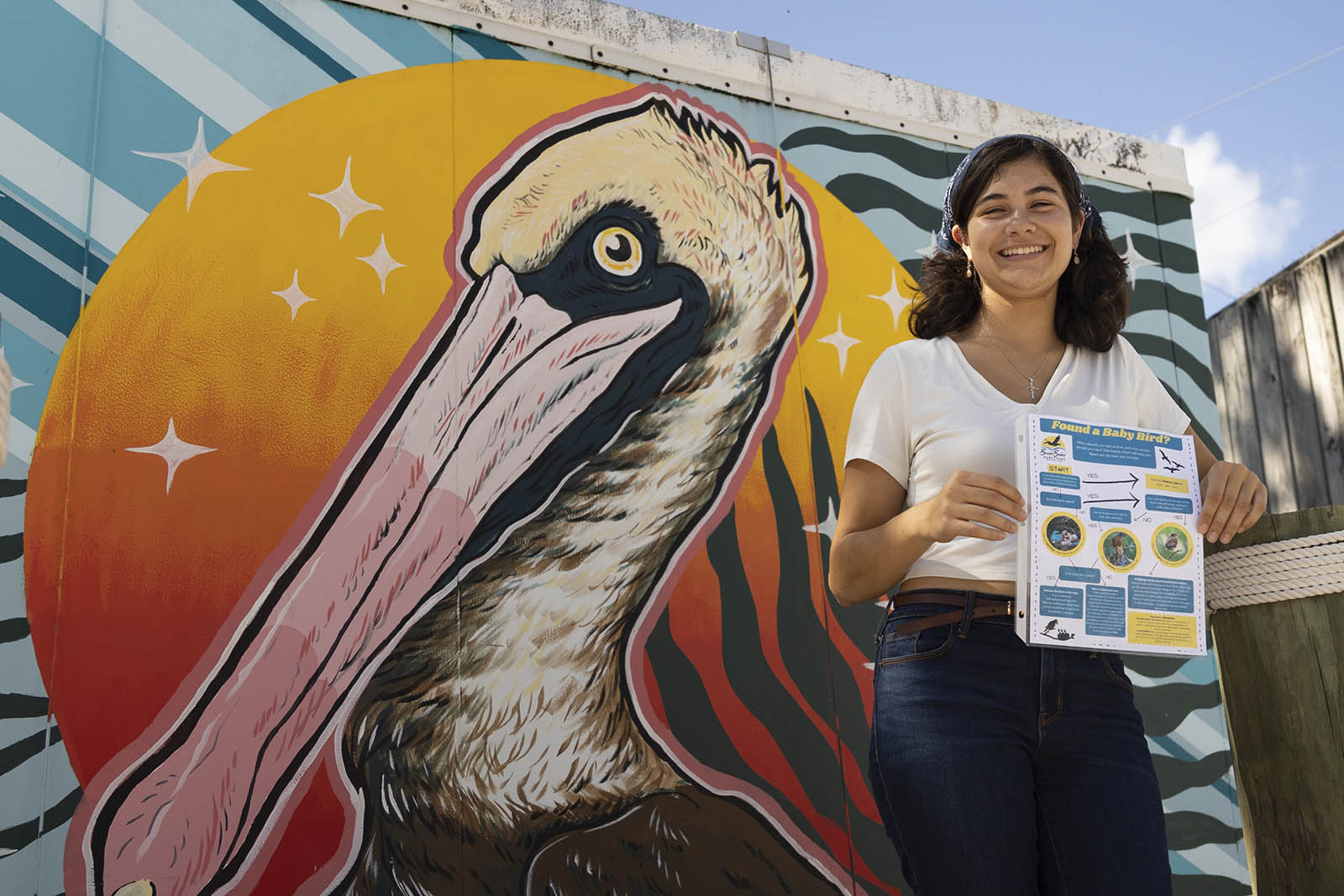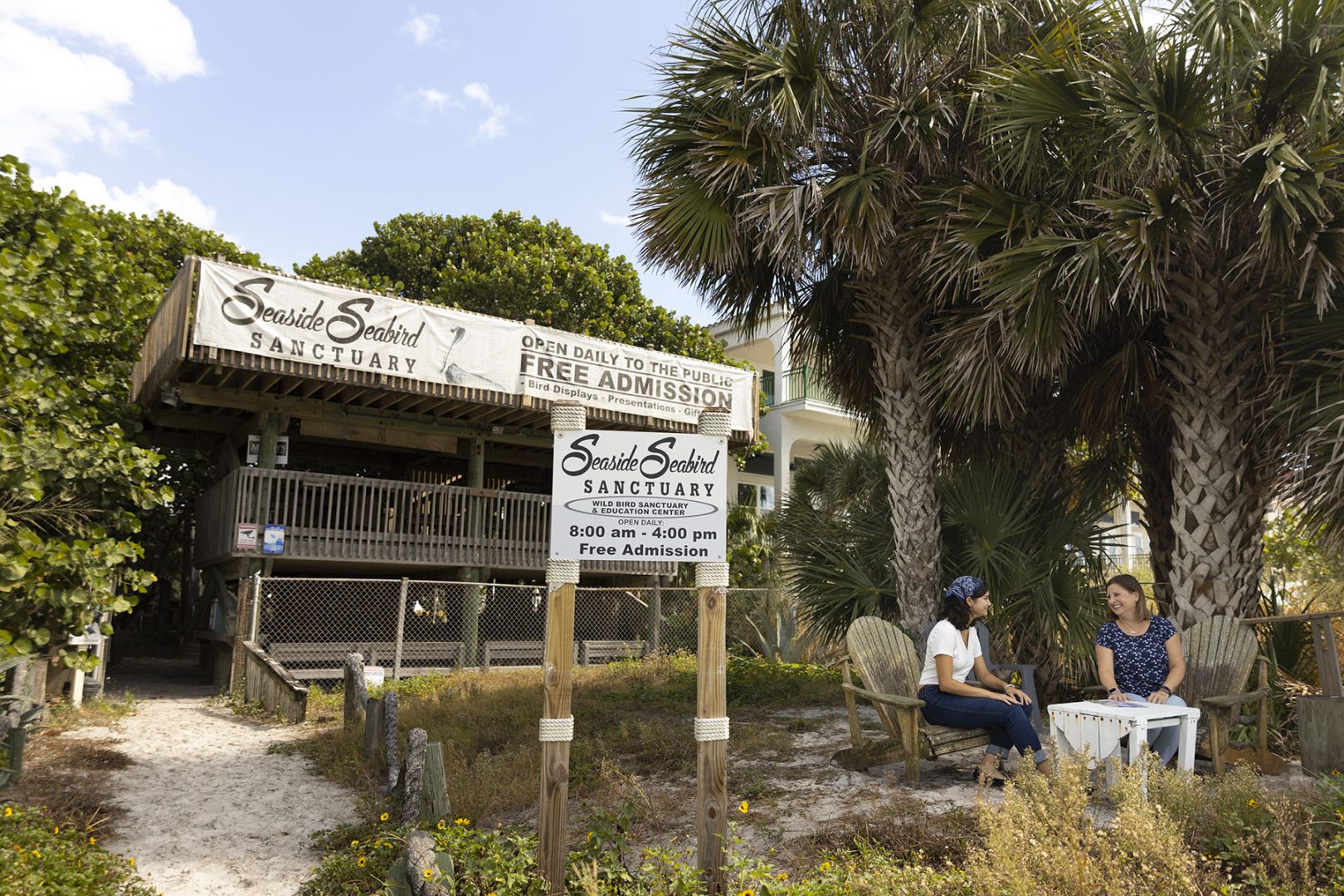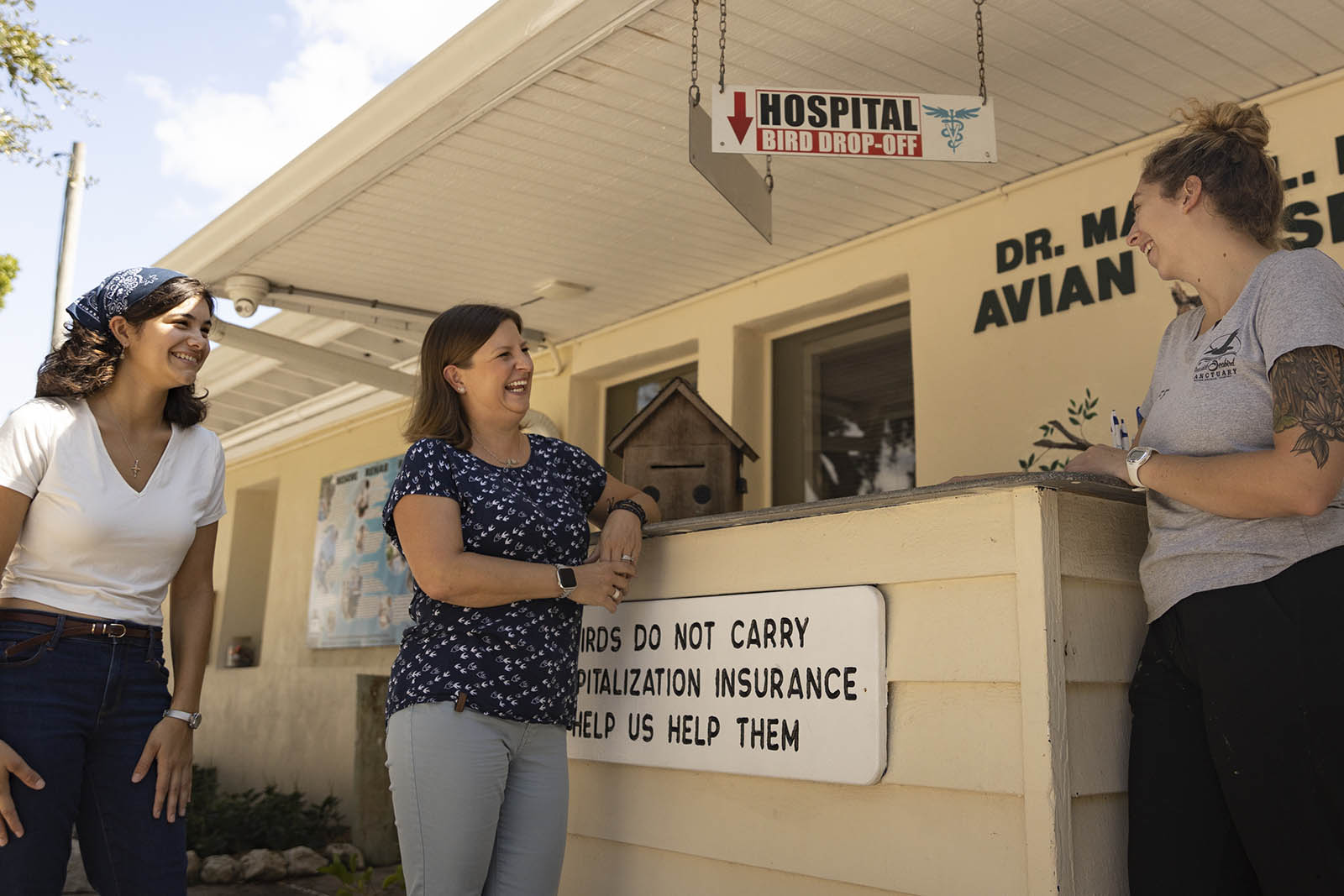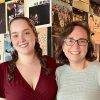During spring nesting season, right at the top of the Seaside Seabird Sanctuary’s Facebook page appeared a bright blue-and-gold flyer filled with arrows, questions and pictures of baby birds.
The flowchart—designed by Eckerd College student Olivia Mendoza—was one of the key informational pieces the organization shared with the community.
“We regularly received well over 50 calls per day on our rescue line regarding baby birds that have been found on the ground,” says Dylan Kahn, the avian hospital coordinator and volunteer/internship coordinator at the Sanctuary. “Public outreach and education are essential during nesting season to help people learn what to do if they find a baby bird on the ground.”
Olivia created the baby-bird flowchart as part of her Reflective Service Learning in her Principles of Marketing class with Eckerd College Marketing Instructor Nina Bergbrant last spring. The organization adopted the finished product and has been using it all year.
“When I found out about this, I was overjoyed because I was proud that something I made and designed was useful for the organization and helped them educate others about baby birds,” says Olivia, a sophomore animal studies student from Winter Park, Florida.
Every Principles of Marketing student is tasked with finding an organization to volunteer with for 20 hours each semester, applying the theory and skills they pick up during Bergbrant’s lectures. In addition to Seaside Seabird, Bergbrant’s students have served Eckerd’s Title IX Office, Friends of Strays, Westminster Communities, Metro Health and Wellness, the Tampa Bay Collard Green Festival, The Kind Mouse and many others.
Bergbrant says the variety of organizations allows students to hone their skills while examining the issues nonprofits face. “I put out a list and encourage them to go off campus, if they can, to challenge themselves,” she admits. “My biggest thing is that they choose something they enjoy or something that jibes with their interests. When they do, they are more driven and motivated.”
Kahn says that well-meaning people often cause problems when they encounter baby birds that have fallen from the nest.
“Well-intentioned attempts to ‘save’ a baby bird by taking it out of the wild and away from its nest and parents can do more harm than good if that bird could’ve been left undisturbed to carry out its natural growth and development,” he explains. “Having an easy-to-follow flowchart graphic to provide to the general public helps to save countless baby birds from being victims of ‘birdnapping,’ and allows for our rescue team and hospital staff to focus more time and effort on the sick and injured birds that do require rescue and rehabilitation.”
After consulting with the Sanctuary, Olivia set to work on the piece they would need while employing the graphic design she had learned in previous assignments.
“I tried to incorporate colorful aspects as well as simpler wording so that multiple age groups could easily understand the content,” Olivia says. “I also prioritized making the visuals more condensed and easy on the eyes to follow since it was a flowchart.”
Bergbrant is continually impressed by her students’ projects. Flyers, emails, social media posts and even full-length video projects are created every semester to help local organizations spread the word about the services they provide the community.
Bergbrant tells her students, “This is where you can make a difference.”
















